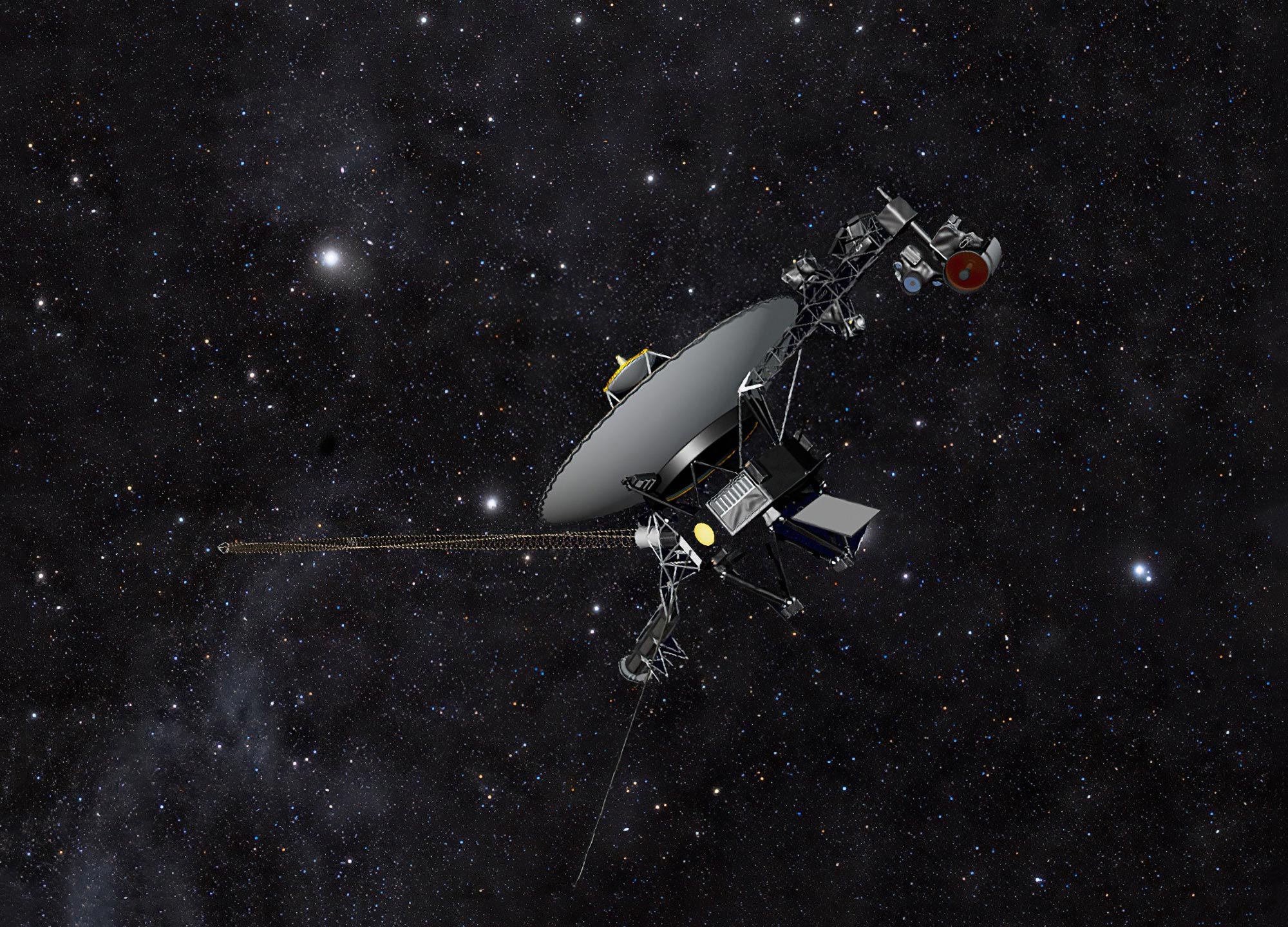
Bu sanatçının konsepti, NASA’nın Voyager uzay aracını uzayın karanlığında bir yıldız tarlasına karşı gösteriyor. İki Voyager uzay aracı, yıldızlararası uzayda bir yolculukta Dünya’dan gittikçe daha uzağa seyahat ediyor ve sonunda Samanyolu’nun merkezinin yörüngesinde dönecek. Kredi: NASA/JPL-Caltech
Plan, Voyager 2’nin bilim araçlarını daha önce beklenenden birkaç yıl daha uzun süre çalıştırarak yıldızlararası uzaydan daha fazla keşif yapılmasını sağlayacak.
1977’de fırlatılan Voyager 2 uzay aracı, yıldızlararası uzayı incelemek için beş bilimsel araç kullanarak Dünya’dan 12 milyar milden (20 milyar kilometre) daha uzakta. Eskiyen uzay aracı, azalan güç kaynaklarına rağmen bu aletleri çalışır durumda tutmaya yardımcı olmak için, yerleşik bir güvenlik mekanizmasının bir parçası olarak bir kenara ayrılmış küçük bir yedek güç rezervuarı kullanmaya başladı. Hareket, misyonun bir bilim aracını kapatmayı bu yıl yerine 2026’ya kadar ertelemesini sağlayacak.
Bilimsel bir aleti kapatmak işi bitirmez. 2026’da bir aleti kapattıktan sonra, düşük güç kaynağı diğerinin kapatılmasını gerektirinceye kadar sonda dört bilim aletine güç vermeye devam edecek. Voyager 2 sağlıklı kalırsa, mühendislik ekibi görevin yıllarca devam etmesini bekliyor.

1976’da JPL’deki uzay simülasyon odasında sergilenen Voyager kanıt testi modeli, 1977’de fırlatılan ikiz Voyager uzay sondalarının tam bir kopyasıydı. . pozisyonlar. Kredi: NASA/JPL-Caltech
Voyager 2 ve ikizi Voyager 1, güneş tarafından üretilen parçacıkların ve manyetik alanların koruyucu balonu olan heliosferin dışında çalışan tek uzay aracıdır. Sondalar, bilim adamlarının heliosferin şekli ve Dünya’yı yıldızlararası ortamdaki enerjik parçacıklardan ve diğer radyasyondan korumadaki rolü hakkındaki soruları yanıtlamasına yardımcı oluyor.
dedi Voyager proje bilimcisi Linda Spilker[{” attribute=””>NASA’s Jet Propulsion Laboratory in Southern California, which manages the mission for NASA.
Power to the Probes
Both Voyager probes power themselves with radioisotope thermoelectric generators (RTGs), which convert heat from decaying plutonium into electricity. The continual decay process means the generator produces slightly less power each year. So far, the declining power supply hasn’t impacted the mission’s science output, but to compensate for the loss, engineers have turned off heaters and other systems that are not essential to keeping the spacecraft flying.
With those options now exhausted on Voyager 2, one of the spacecraft’s five science instruments was next on their list. (Voyager 1 is operating one less science instrument than its twin because an instrument failed early in the mission. As a result, the decision about whether to turn off an instrument on Voyager 1 won’t come until sometime next year.)

Each of NASA’s Voyager probes are equipped with three radioisotope thermoelectric generators (RTGs), including the one shown here. The RTGs provide power for the spacecraft by converting the heat generated by the decay of plutonium-238 into electricity. Credit: NASA/JPL-Caltech
In search of a way to avoid shutting down a Voyager 2 science instrument, the team took a closer look at a safety mechanism designed to protect the instruments in case the spacecraft’s voltage – the flow of electricity – changes significantly. Because a fluctuation in voltage could damage the instruments, Voyager is equipped with a voltage regulator that triggers a backup circuit in such an event. The circuit can access a small amount of power from the RTG that’s set aside for this purpose. Instead of reserving that power, the mission will now be using it to keep the science instruments operating.
Although the spacecraft’s voltage will not be tightly regulated as a result, even after more than 45 years in flight, the electrical systems on both probes remain relatively stable, minimizing the need for a safety net. The engineering team is also able to monitor the voltage and respond if it fluctuates too much. If the new approach works well for Voyager 2, the team may implement it on Voyager 1 as well.
“Variable voltages pose a risk to the instruments, but we’ve determined that it’s a small risk, and the alternative offers a big reward of being able to keep the science instruments turned on longer,” said Suzanne Dodd, Voyager’s project manager at JPL. “We’ve been monitoring the spacecraft for a few weeks, and it seems like this new approach is working.”
The Voyager mission was originally scheduled to last only four years, sending both probes past Saturn and Jupiter. NASA extended the mission so that Voyager 2 could visit Neptune and Uranus; it is still the only spacecraft ever to have encountered the ice giants. In 1990, NASA extended the mission again, this time with the goal of sending the probes outside the heliosphere. Voyager 1 reached the boundary in 2012, while Voyager 2 (traveling slower and in a different direction than its twin) reached it in 2018.
More About the Mission
Jet Propulsion Laboratory (JPL), a division of Caltech in Pasadena, built and operates the Voyager spacecraft. The Voyager missions are a part of the NASA Heliophysics System Observatory, sponsored by the Heliophysics Division of the Science Mission Directorate in Washington.

“Analist. Tutkulu zombi gurusu. Twitter uygulayıcısı. İnternet fanatiği. Dost pastırma hayranı.”





More Stories
‘Beni ürpertti’: Bilim adamları, şimdiye kadar gözlemlenen en güçlü gama ışını patlamasının bir sır sakladığını söylüyor
NASA’nın Perseverance gezgini, Mars’ta eski yaşama işaret edebilecek bir kaya buldu
Neandertal gibi yemek pişirmek ister misin? Arkeologlar sırları keşfediyor